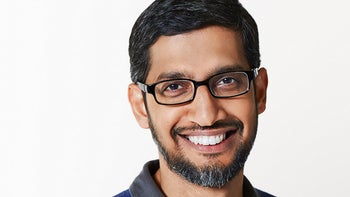Alphabet's Pichai says contact tracing meaningful if only 10% to 20% opt-in

Now that Apple and Google have released their exposure notification APIs, developers can create the apps that will exchange anonymous information between smartphone owners who pass by each other closer than six and a half feet away. Each phone with an app offered by a local public health organization installed (both iOS and Android) will be able to store two weeks of anonymous data received via Bluetooth from phones passing by. If one of those passersby tests positive for COVID-19, a notification will appear on phones that were within the exposure distance of six and a half feet. The name of the person who tested positive will not be available to anyone, and neither will be any location data.
Pichai says that he sees Google and Apple working together in the future
The idea is that if you receive a notification stating that you might have been exposed, you should get tested and self-quarantine for two weeks. If everyone were to use this contact tracing, it would, in theory, reduce the spread of the coronavirus. This is the first phase of Apple and Google's plan. In the second phase, the exposure notification platform becomes native to iOS and Android which means that users won't have to install an app to opt-in.

Alphabet CEO Pichai says that this logo might be seen again in the future
Speaking of opting-in, many claim that this plan will be a failure unless a high percentage of iOS and Android users opt-in. But Wired recently spoke with Alphabet CEO Sundar Pichai and he said that "Even if only 10 to 20 percent of users opt-in, this will have a real, meaningful impact. The more, the better." Pichai discussed that both Apple and Google were independently working on technology that would support contact tracing for local health authorities and "Very quickly both sides realized that for this to work well it has to be available everywhere. So engineering teams across Android and iOS organically started reaching out. At some point, Tim and I decided to exchange notes and talk directly."
Sure, Sundar did drop Tim Cook's name but he is one of the few people in the world allowed to. In fact, he says that Apple's CEO meets with him "periodically." And he did state that he is interested in working with Apple on other projects in the future and said that Cook feels the same about working with Google again. Commenting on recent reports that Google is going to be hit with antitrust suits by the state and federal governments, Pichai states, "The scrutiny is not new for us. I think it is a proper function of a society to scrutinize large companies. We are in many ecosystems—for example, in ad tech, we are in the middle of an ecosystem where we’re supporting users, publishers, advertisers. I want to engage constructively. We will make our case as how we have approached our work through the lens of being helpful to users and customers."
And while Google's size does make it a target for antitrust investigations, it also has prevented the company from becoming a big player in the M&A arena. Pichai says that Google can participate in mergers and acquisitions but only in areas where it is a smaller player. This is one area of the M&A market that Apple has cornered, buying smaller firms out of the country that are also under the radar. Often these companies have just one product or technology that Apple can employ in a year or two.
But we should point out that just last November, Alphabet announced that it was buying fitness tracker manufacturer Fitbit for $2.1 billion. And Google has been known to make a bigger splash; for example, back in 2011 it bought Motorola for $12.5 billion. After stripping the company of valuable patents, it ended up selling Motorola to Lenovo for $2.91 billion in 2014.
As for Google's China-based business, always in the news since Huawei was banned from its U.S. supply chain, Pichai notes that while the company does have a presence in the country, it is not offering or planning on offering any of its core products in China.










Things that are NOT allowed: